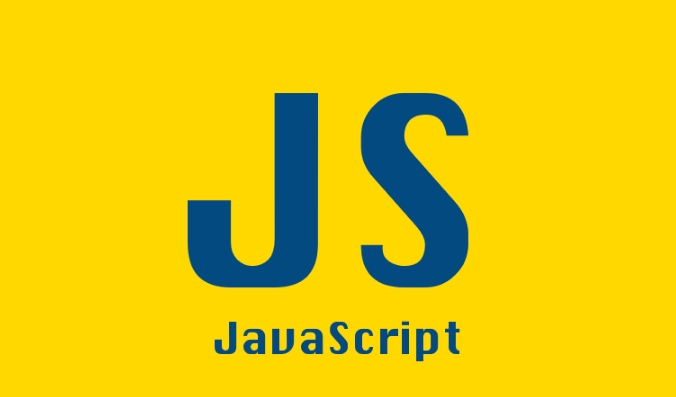掌握JavaScript数组方法:``map`,`filt filter''和`reste''
JavaScript的数组方法map、filter和reduce用于编写清晰、函数式的代码。1. map用于转换数组中的每个元素并返回新数组,如将摄氏温度转为华氏温度;2. filter用于根据条件筛选元素并返回符合条件的新数组,如获取偶数或活跃用户;3. reduce用于累积结果,如求和或统计频次,需提供初始值并返回累加器;三者均不修改原数组,可链式调用,适用于数据处理与转换,提升代码可读性与功能性。

JavaScript’s array methods like map, filter, and reduce are essential tools for writing clean, functional, and readable code. Once you understand how they work and when to use them, you’ll find yourself reaching for for loops much less often. Let’s break down each method with practical examples and clear explanations.

map: Transform Every Element in an Array
Use map when you want to transform each item in an array and return a new array with the updated values.
It doesn’t change the original array — it creates a new one.

Example: Convert temperatures from Celsius to Fahrenheit
const celsius = [0, 10, 20, 30, 40]; const fahrenheit = celsius.map(temp => (temp * 9/5) 32); console.log(fahrenheit); // [32, 50, 68, 86, 104]
Key points:

- Always returns a new array of the same length.
- Great for formatting data (e.g., transforming API responses).
- Common in React for rendering lists.
? Think of
mapas a factory line: each item goes in, gets processed, and comes out changed.
filter: Keep Only What You Need
Use filter when you want to select a subset of items based on a condition.
It returns a new array with only the elements that pass the test.
Example: Get only even numbers
const numbers = [1, 2, 3, 4, 5, 6, 7, 8]; const evens = numbers.filter(num => num % 2 === 0); console.log(evens); // [2, 4, 6, 8]
Example: Find active users
const users = [
{ name: 'Alice', active: true },
{ name: 'Bob', active: false },
{ name: 'Charlie', active: true }
];
const activeUsers = users.filter(user => user.active);
console.log(activeUsers);
// [{ name: 'Alice', active: true }, { name: 'Charlie', active: true }]Key points:
- The returned array can be shorter than the original.
- The callback must return
trueorfalse. - You can chain it with other methods.
?️
filteris perfect when you're searching, cleaning data, or applying user filters in UIs.
reduce: Build Up a Single Value
Use reduce when you want to accumulate a result — like a sum, object, or nested structure — from an array.
It’s the most powerful but also the most misunderstood.
Example: Sum all numbers
const nums = [1, 2, 3, 4]; const sum = nums.reduce((accumulator, current) => accumulator current, 0); console.log(sum); // 10
How it works:
accumulatorholds the result so far.currentis the current element.- The second argument (
0) is the initial value of the accumulator.
Example: Count occurrences (grouping)
const fruits = ['apple', 'banana', 'apple', 'orange', 'banana', 'apple'];
const count = fruits.reduce((acc, fruit) => {
acc[fruit] = (acc[fruit] || 0) 1;
return acc;
}, {});
console.log(count);
// { apple: 3, banana: 2, orange: 1 }Key points:
- You can return any type: number, object, array, etc.
- Always return the accumulator (or updated state) in the callback.
- Initial value is optional but highly recommended to avoid bugs.
?
reduceis like folding a list into a single value — imagine gathering scattered papers into one stack.
Bonus: Chaining Methods Together
One of the best parts? You can chain these methods for powerful data processing.
Example: Get total price of expensive books
const books = [
{ title: 'JS Guide', price: 25 },
{ title: 'React Tips', price: 30 },
{ title: 'CSS Tricks', price: 15 },
{ title: 'Node Handbook', price: 35 }
];
const total = books
.filter(book => book.price > 20) // Keep expensive books
.map(book => book.price) // Extract prices
.reduce((sum, price) => sum price, 0); // Sum them
console.log(total); // 90This is readable, functional, and avoids manual loops.
These three methods — map, filter, and reduce — are the building blocks of functional programming in JavaScript. Use them to write clearer, more predictable code. They might feel awkward at first, but once they click, you’ll wonder how you ever coded without them.
Basically, just remember:
-
map→ change each item -
filter→ pick some items -
reduce→ boil it all down
And don’t forget: they all return new arrays (or values), so keep things immutable and safe.
以上是掌握JavaScript数组方法:``map`,`filt filter''和`reste''的详细内容。更多信息请关注PHP中文网其他相关文章!

热AI工具

Undress AI Tool
免费脱衣服图片

Undresser.AI Undress
人工智能驱动的应用程序,用于创建逼真的裸体照片

AI Clothes Remover
用于从照片中去除衣服的在线人工智能工具。

Clothoff.io
AI脱衣机

Video Face Swap
使用我们完全免费的人工智能换脸工具轻松在任何视频中换脸!

热门文章

热工具

记事本++7.3.1
好用且免费的代码编辑器

SublimeText3汉化版
中文版,非常好用

禅工作室 13.0.1
功能强大的PHP集成开发环境

Dreamweaver CS6
视觉化网页开发工具

SublimeText3 Mac版
神级代码编辑软件(SublimeText3)
 了解PHP中数组的定义方法
Mar 13, 2024 pm 02:09 PM
了解PHP中数组的定义方法
Mar 13, 2024 pm 02:09 PM
标题:PHP中数组的定义方法及具体代码示例PHP中数组是一种非常重要的数据类型,能够存储多个值,并且可以根据索引或者键值进行访问。在PHP中,数组有多种定义方法,本文将介绍其中常用的几种方法,并提供具体的代码示例来帮助理解。1.索引数组索引数组是最常见的一种数组类型,其元素通过数字索引进行访问。在PHP中,可以使用array()函数或者简化的[]符号来定义
 深入了解Go语言数组方法的实战应用
Mar 24, 2024 pm 12:36 PM
深入了解Go语言数组方法的实战应用
Mar 24, 2024 pm 12:36 PM
Go语言作为一种快速、简洁和高效的编程语言,拥有强大的工具和功能来处理数组。在Go语言中,数组是一种固定长度的数据结构,它可以存储一组相同类型的数据元素。本文将探讨Go语言中数组的方法,并提供具体的实战应用示例。1.声明和初始化数组在Go语言中,声明和初始化一个数组可以通过以下方式进行://声明一个包含5个整数的数组vararr[5]int//
 掌握Go语言数组方法的常见问题与解决方案
Mar 23, 2024 pm 09:21 PM
掌握Go语言数组方法的常见问题与解决方案
Mar 23, 2024 pm 09:21 PM
掌握Go语言数组方法的常见问题与解决方案在Go语言中,数组是一种基本的数据结构,它由固定长度的相同数据类型的元素组成。在编写Go程序时,我们经常会使用数组来存储一组数据。然而,由于数组在Go语言中的特性和限制,有些问题在处理数组时会比较棘手。本文将介绍一些常见的数组问题以及相应的解决方案,并提供具体的代码示例。问题一:如何声明和初始化数组?在Go语言中,可以
 利用Array.Prototype方法用于JavaScript中的数据操作
Jul 06, 2025 am 02:36 AM
利用Array.Prototype方法用于JavaScript中的数据操作
Jul 06, 2025 am 02:36 AM
JavaScript数组内置方法如.map()、.filter()和.reduce()可简化数据处理;1).map()用于一对一转换元素生成新数组;2).filter()按条件筛选元素;3).reduce()用于聚合数据为单一值;使用时应避免误用导致副作用或性能问题。
 某些()和每个()阵列方法有什么区别?
Jun 25, 2025 am 12:35 AM
某些()和每个()阵列方法有什么区别?
Jun 25, 2025 am 12:35 AM
一些()returnStrueifatLeastOnelementPasseStestest,wherevery()returnstRueonlyifalleyspass.1.Some()()excesseforexistEnceCheckSslikeSlikeValidativeActiveActiveAsevalikeUserOusorOut-of-of-of-Stockproductucts.2.every()
 Reled()阵列方法如何工作,什么是好的用例?
Jul 07, 2025 am 01:33 AM
Reled()阵列方法如何工作,什么是好的用例?
Jul 07, 2025 am 01:33 AM
Thereduce()methodinJavaScriptisapowerfularraytoolthatreducesanarraytoasinglevaluebyapplyingareducerfunction.1.Ittakesanaccumulatorandcurrentvalueasrequiredparameters,andoptionallyaninitialvalue.2.Commonusesincludecalculatingtotals,groupingdata,flatte
 高级JavaScript数组方法用于数据转换
Jul 16, 2025 am 02:23 AM
高级JavaScript数组方法用于数据转换
Jul 16, 2025 am 02:23 AM
JavaScript的数组方法如map、filter和reduce能有效简化数据处理。1.map用于转换数组元素,返回新数组,例如提取字段或修改格式;2.filter用于筛选符合条件的元素,返回新数组,适合过滤无效值或特定条件数据;3.reduce用于聚合操作,如求和或统计,需注意设置初始值并正确返回累积器。这些方法不改变原数组,支持链式调用,提升代码可读性和维护性。
 掌握JavaScript数组方法:``map`,`filt filter''和`reste''
Aug 03, 2025 am 05:54 AM
掌握JavaScript数组方法:``map`,`filt filter''和`reste''
Aug 03, 2025 am 05:54 AM
JavaScript的数组方法map、filter和reduce用于编写清晰、函数式的代码。1.map用于转换数组中的每个元素并返回新数组,如将摄氏温度转为华氏温度;2.filter用于根据条件筛选元素并返回符合条件的新数组,如获取偶数或活跃用户;3.reduce用于累积结果,如求和或统计频次,需提供初始值并返回累加器;三者均不修改原数组,可链式调用,适用于数据处理与转换,提升代码可读性与功能性。







